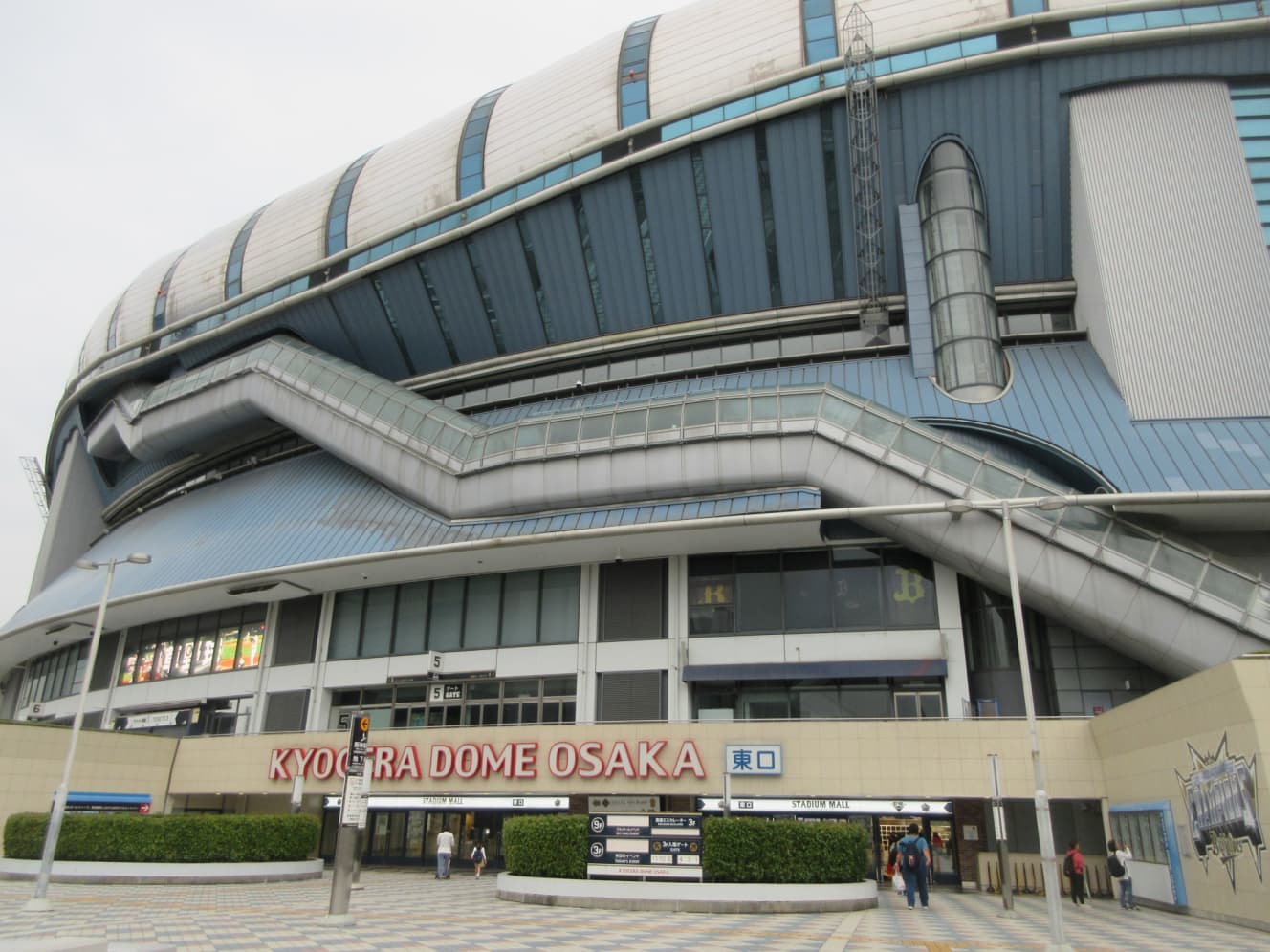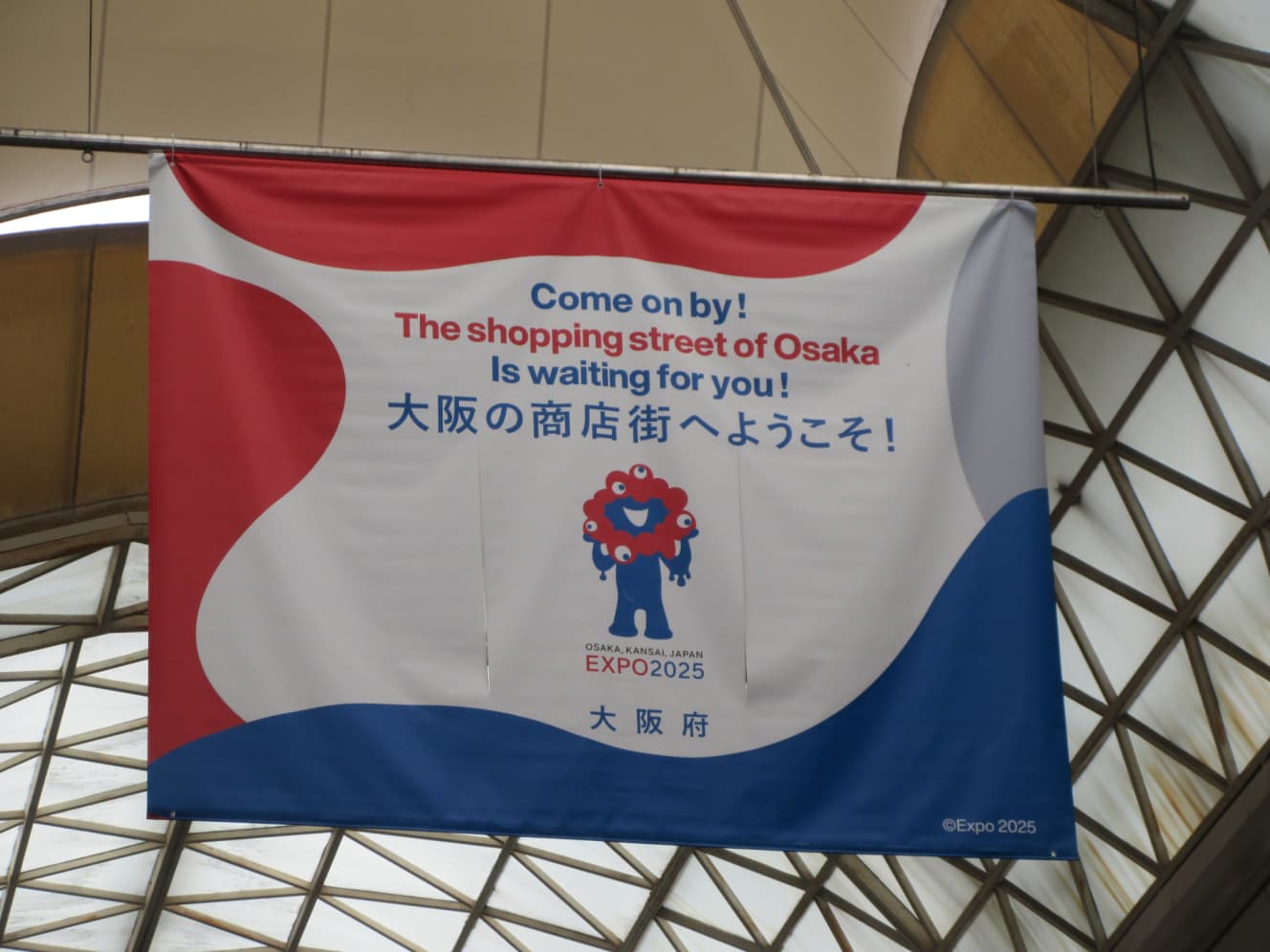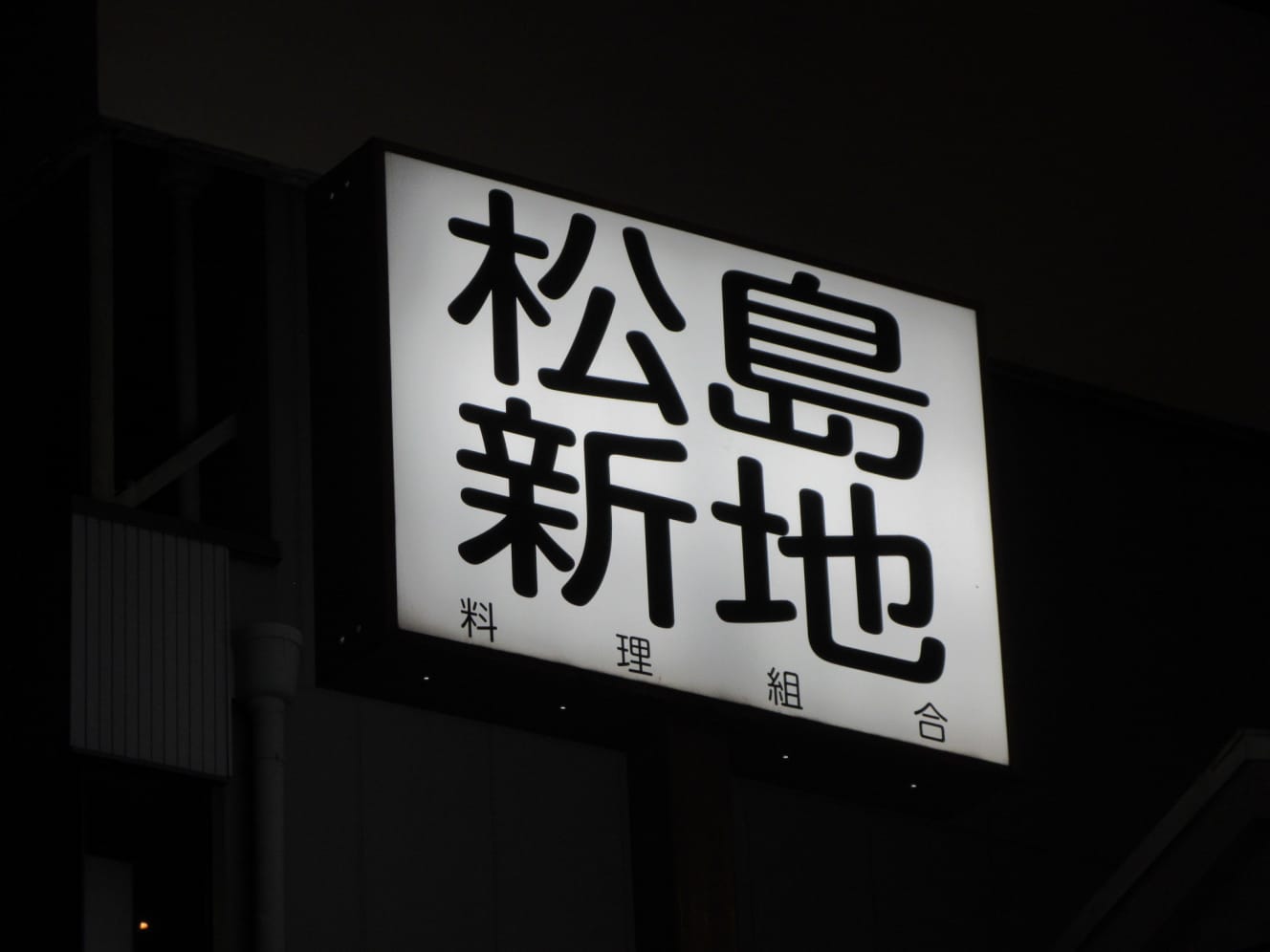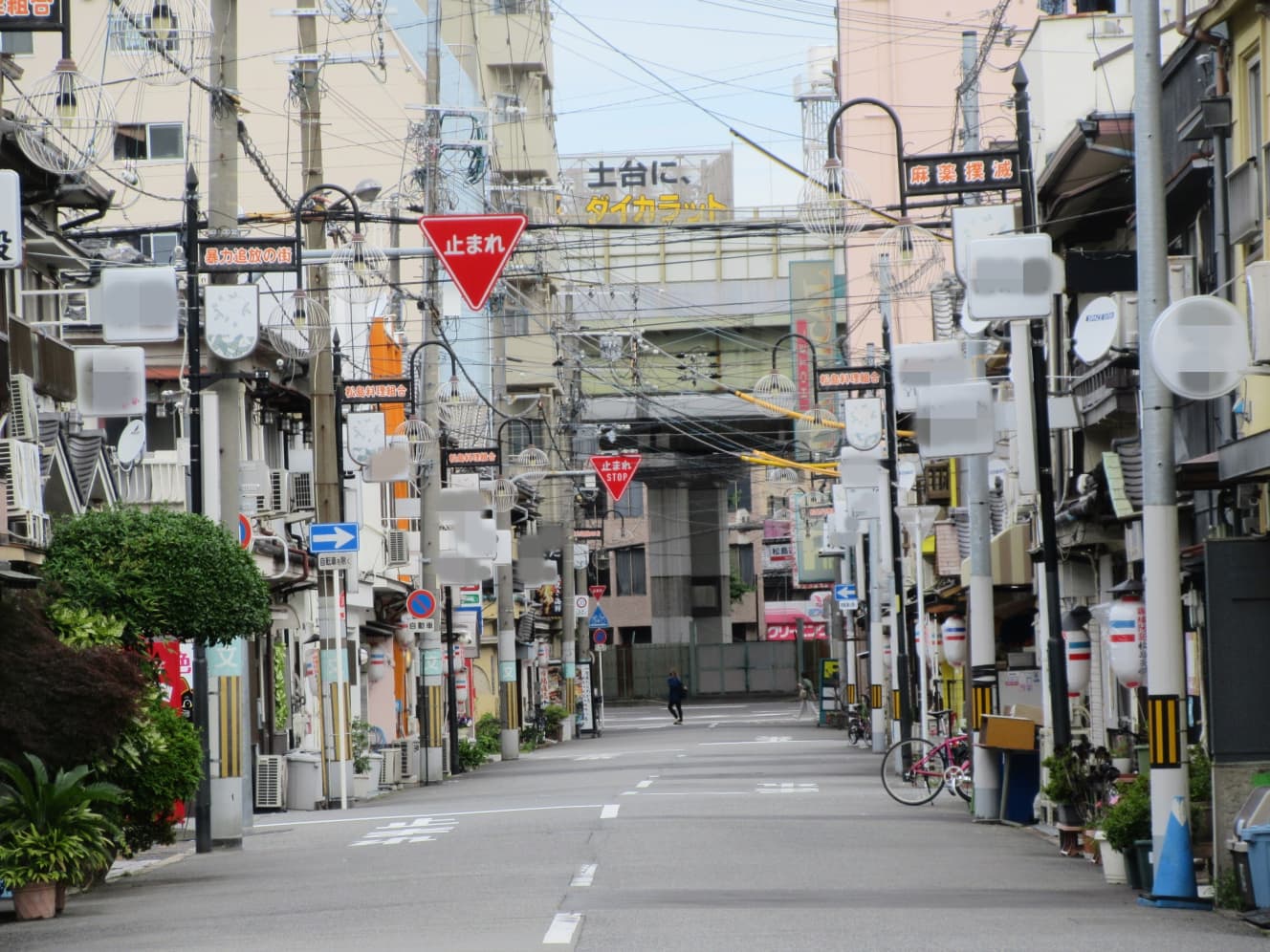The level of the main street is second to none in Tobita Shinchi…Inbound visitors are also eager to visit…A Thorough Guide to Matsushima Shinchi, Osaka
Walking through Matsushima Shinchi in the evening, the second “ryotei district” after Tobita Shinchi
Osaka’s “Chon-no-Ma” district is hot right now. As the “Osaka-Kansai Expo,” which will be held for about six months from next April, approaches, the number of inbound tourists to Osaka City is increasing. The internationalization of Tobita-shinchi, “Japan’s No. 1 ryotei district,” is well known, but Matsushima-shinchi, the second largest “densely populated area” after Tobita-shinchi, is also attracting foreign visitors.
We visited Matsushima Shinchi at around 18:00 on the evening of Wednesday, June 12. The nearest stations are Kujo Station on the Osaka Metro Chuo Line or Kujo Station on the Hanshin Namba Line. The closest station is Exit 6 of Kujo Station on the Chuo Line, which is about a 2- to 3-minute walk from the station. From Kujo Station on the Hanshin Namba Line, take Exit 1 or 2, and it is a 5-minute walk.
The main street has two lanes and is wide enough to allow oncoming cars to pass by. In addition, the ryotei (traditional Japanese restaurants) are large, and the number of stores and customers is small, so the entire town is relaxed. Tobita Shinchi is crowded with tourists, making it uncomfortable, but Matsushima Shinchi is not as crowded as Tobita Shinchi and has a more relaxed atmosphere, so you can take your time to enjoy the area. The distance between stores is not too dense, and it is not crowded and hectic like Tobita Shinchi.
There are a few foreign customers here and there. A group of four young Koreans, a group of four Chinese men and two companions. There was also a blonde-haired Caucasian. A middle-aged man with glasses resembling Kent Gilbert and a middle-aged man with long hair tied back in a “chonmage” style resembling Kevin Costner. Both of these men were walking around the Shinchi area alone. It is not so much that there are few foreign customers, but rather that there are few customers themselves. Tobita Shinchi is unique in that there are so many visitors from early morning to late at night that it is a “festival every day.
When I see the women at the ryotei restaurants in Matsushima Shinchi, I feel relaxed and at ease. When our eyes meet, a pretty woman smiles at me, and I am soothed. When a woman waves her hand lightly and smiles at you, it makes you feel relaxed. It has a different charm from Tobita Shinchi, where a beautiful woman stares at you and makes you nervous, and you can’t take your eyes off her and feel like you are being sucked in.
The level of women working at the ryotei restaurants in Matsushima Shinchi is high. Especially in the central part of the main street, they are as good as those in Tobita-shinchi. Like Tobita Shinchi, cosplay is also popular. There were women wearing gorgeous light blue kimonos, the yellow uniform of the Hanshin Tigers, the blue uniform of the Japanese national soccer team, a gray “virginity-killing sweater” with a wide chest opening, and even a Super Mario costume. Beast ears were also in vogue, and two women were wearing black earrings.
In Matsushima Shinchi, even on the main street, there were more women in sexy, but relaxed, mature costumes, such as open-breasted white one-piece dresses, than in cosplay. This is slightly different from the main street of Tobita Shinchi and Seishun Dori, where there is a wide variety of cosplay and “lots of strong stimulation.
As three elderly women walked down the main street at sunset, two of them quickly covered their faces with a fan. This area is the same as Tobita Shinchi. The women use the fans to prevent voyeurs from taking pictures and to keep people from “chilling out.
As I walked around the Shinchi, I noticed that there are no public toilets, rest areas, clock towers, dedicated parking lots, or guide maps like in Tobita Shinchi. The ryotei restaurants are located “in the middle of a normal town. The ryotei are mixed in with private homes, condominiums, factories, construction sites, dry cleaners, beauty salons, and restaurants. The boundary with the residential area is extremely vague and chaotic. It is quite different from Tobita Shinchi, which has become an “international amusement park” with everything well maintained and even an English map.
If Tobita Shinchi is a “well-developed urban park,” Matsushima Shinchi is like a “natural park full of natural wildness. While Tobita-shinchi is a “well-designed entertainment district that looks like something out of a movie,” Matsushima-shinchi is more like a “back-alley entertainment district that is an extension of everyday life. It is also like “a maze where you cannot find the exit because there is no map,” and “a dungeon where it is difficult to escape because it is hard to get a bird’s eye view of the path. The atmosphere of Matsushima Shinchi is different from that of Tobita Shinchi, which is also located in Osaka City, and is wild and wild.
Basic information about Matsushima Shinchi: history, geography, prices, and how to play
Matsushima Shinchi is the second largest ryotei district in Osaka after Tobita Shinchi, with about 80 restaurants. Tobita-shinchi has about 160 restaurants, which is half the size of Matsushima-shinchi. Stores are scattered over a wide area in the area of Kujo 1-chome and Honden 2-chome, Nishi-ku, Osaka City. The “front street,” Main Street and Matsumoto Street, can be divided into six areas : Main Street, Matsumoto Street, Station and Post Office Area, Main Rear Area, Shrine Rear Street, and Honda Area. The other four areas are so-called “red-light districts. The other four areas are so-called “back streets” and are said to have a slightly lower level of women than the front streets. 15 minutes is enough time to tour the entire town.
The “main street” runs from Chuo Boulevard, under the elevated Hanshin Expressway Route 16 Osaka Port Line, to the back of Ibarasu Sumiyoshi Shrine, facing Minato Street, which runs east-west through Osaka City. It is the most heavily trafficked street in Matsushima Shinchi.
Matsumotokiyodori runs north-northeast from the Matsumotokiyoshi drugstore in the Kujo Nine Mall shopping arcade in the south of the Shinchi district, and there are about a dozen restaurants in a 100 meter radius.
The “Ekichika Post Office Area” is close to Kujo Station on the Osaka Metro Chuo Line, and is the first area that visitors coming by train will see. There are more than a dozen restaurants near the Osaka Kujo Post Office, which is also called “Post Office Backstreet.
The “main back area” is an alley on the east side of Matsukyo Street, with less than 10 ryotei restaurants on both sides of the narrow street.
The ” Shrine Back Street” is a street behind the Ibaraki Sumiyoshi Shrine, where about four ryotei restaurants are located.
The ” Honda area” is on the north side of the road that crosses in front of the Matsushima Shinchi Cuisine Association (commonly known as “Cuisine Association Street” or “Association Mae Street”), and is dotted with about 16 ryotei restaurants. It is sometimes referred to as the “O-no-ji intersection area” or “Factory Street.
The system is to look around the ryotei where women are showing their faces, and if you find one you like, you can go up to the restaurant. The customers can choose a girl after seeing her in person, which makes them feel more secure in their decision. In Tobita-shinchi, one person sits in one store, but in Matsushima-shinchi, two or three people sit together in many stores and show their faces at the same time. Depending on the restaurant and the time of day, one person may be showing his/her face.
Ryotei restaurants begin to open in pockets around 10 to 11 a.m., and most of them open by 3 to 5 p.m. The evening is the busiest time of the day. It is not until around 6:00 p.m. in the evening that the place becomes fully crowded. You can play if you enter before 23:59.
Prices range from 13,000 yen for 20 minutes to 18,000 yen for 30 minutes, rising 5,000 yen in 10-minute increments up to a 60-minute course. On the main street, the 30-minute course is the minimum, but some restaurants offer a 20-minute course. The 20- and 30-minute courses cost 3,000 yen less than in Tobita Shinchi. Because of the reasonable prices, 70 to 80% of the customers play the 20- or 30-minute courses.
The main difference from Tobita Shinchi is that they take a shower before and after play. They say they can play in a clean and refreshed state. Because of the shower, the 20-minute session is often too short or too short, so the 30-minute course is often used.
Many of the women are not as good looking or stylish as those in Tobita Shinchi, but they are charming and provide good service. They are approachable and friendly. There are not many flashy women, but there are simple and cute women who do not seem to be in the sex industry or water business. Recommended for those who are not only looking for good looks.
The former Matsushima brothel, established in 1869, has a longer history than Tobita Shinchi, which opened in 1918. It was moved to its current location after being destroyed by fire in an air raid on Osaka in March 1945, and became a ryotei district after the postwar red-light district period. Today, there are still a few buildings that remind us of the old days. The area was at its peak from the Taisho to Showa periods, when the number of prostitutes surpassed that of Yoshiwara in Tokyo. Because the area was relocated after the war, there are no geiko buildings with a history of 100 years, such as “Taiyoshi Hyakuban” in Tobita Shinchi.
The only notable tourist attraction in the neighborhood is the Kyocera Dome Osaka, a dome stadium. This area is different from Tobita Shinchi, where Tsutenkaku Tower, Abeno Harukas, and Tennoji Zoo are located nearby. The arcade shopping street “Kujo Nine Mall Shopping Arcade” is a normal, wholesome shopping street, and does not have the obscenity of the Tobita Hondori Shopping Arcade near Tobita Shinchi. Of course, there is no “do-ya-machi” like in Nishinari. Comparing the two, it is easy to see that the area around Tobita Shinchi is a rare “other world.


Reporting and writing: Akira Ikoma
Pen name is Master Ikoma. He is the former editor-in-chief of the "Ore no Tabi" series of sex industry magazines. With a motto of thorough on-the-spot reporting, he has completely traversed all the entertainment districts in Japan. As a freelance editorial reporter, he continues "Ore no Tabi" through articles in magazines and websites and his own SNS. He is the co-author of "Fuzoku no Gendai Shi" (A Modern History of Fuzoku) and "Rupo Nihon no Ijikai Chizu" (Reportage: A Map of Japan's Different Worlds).

